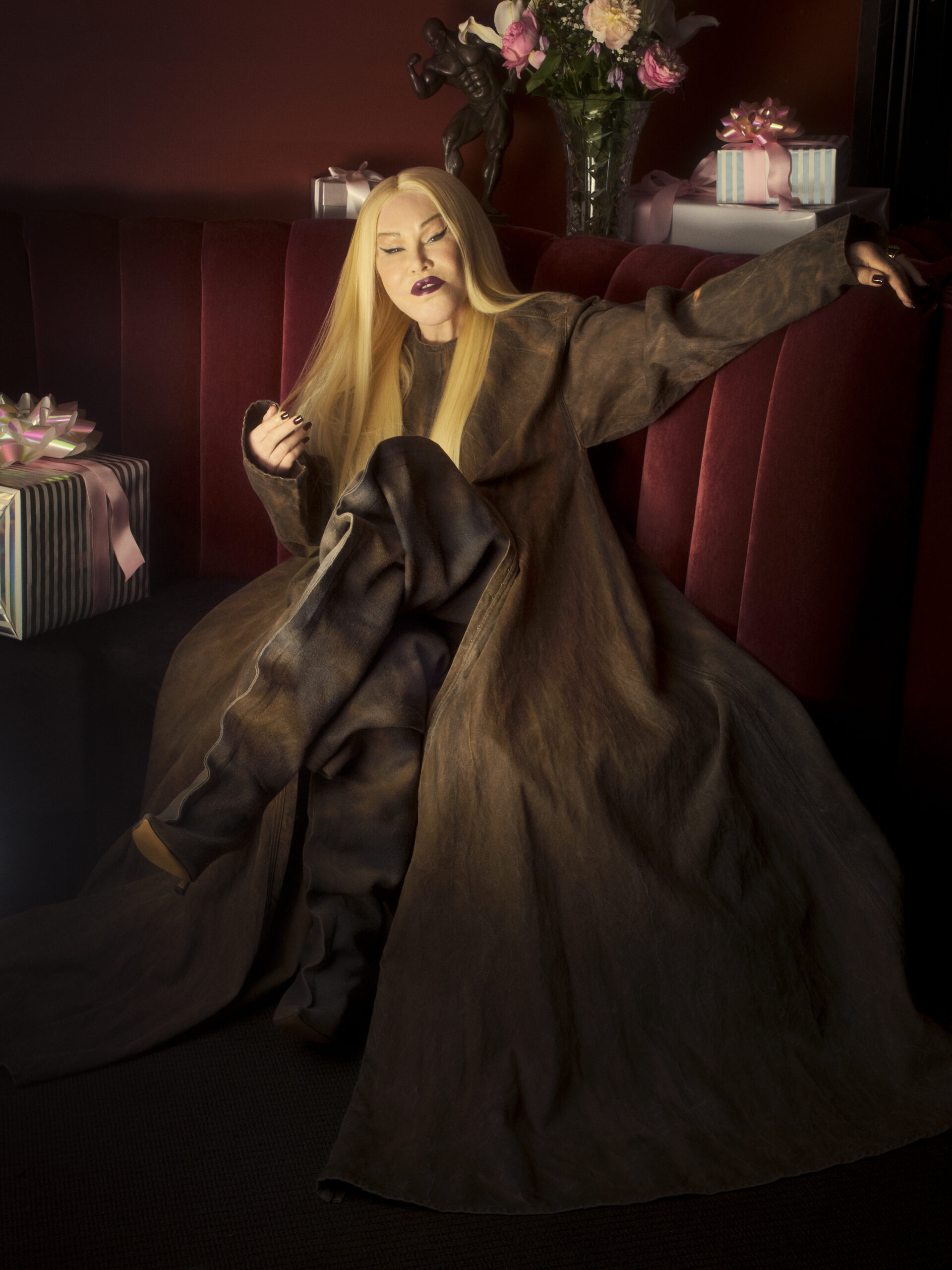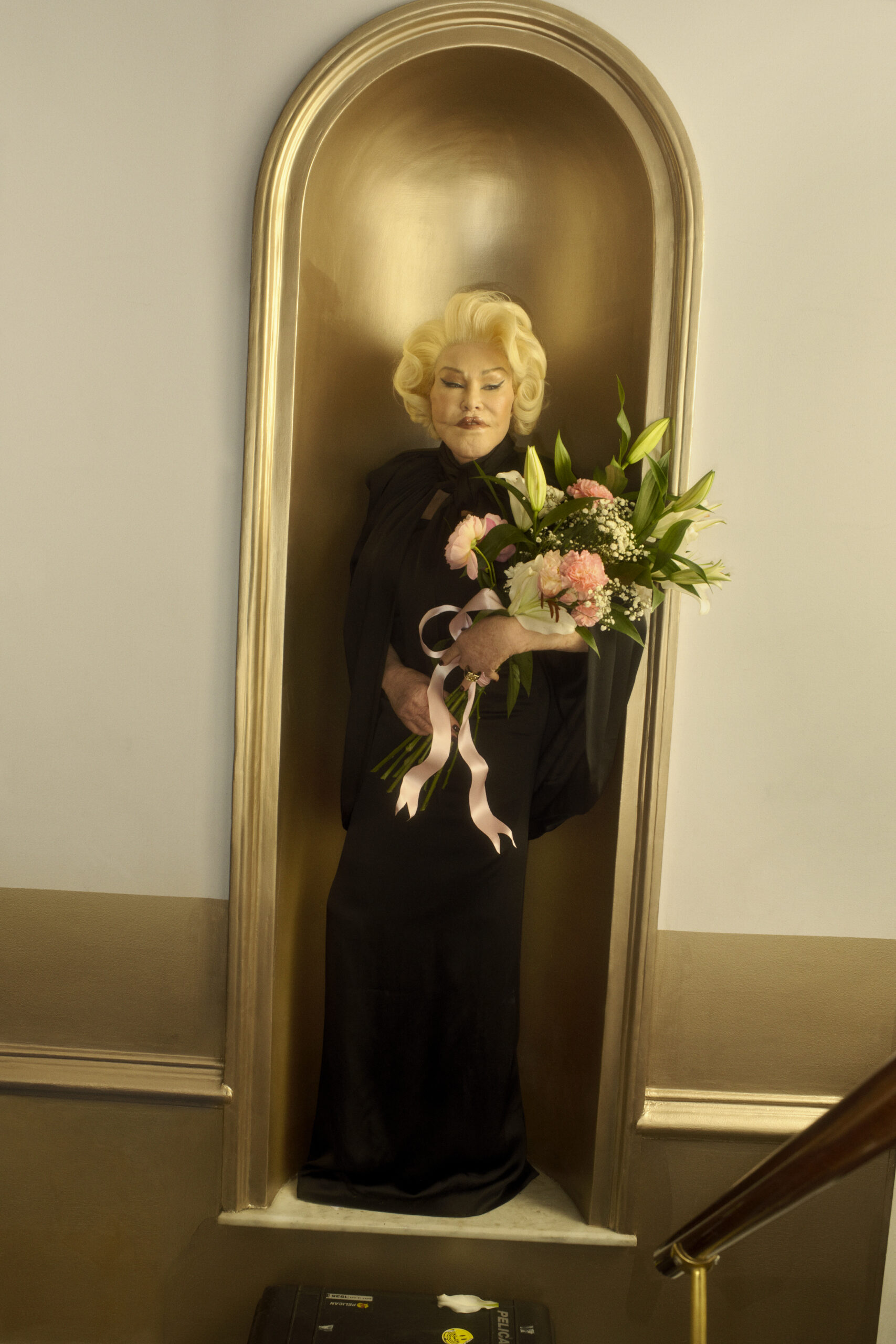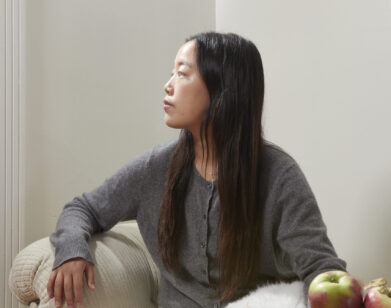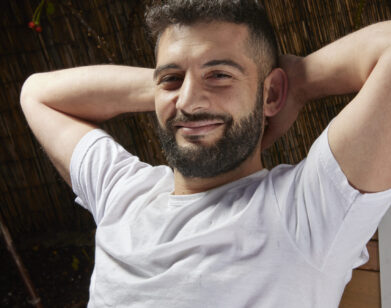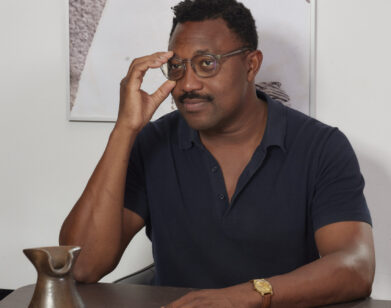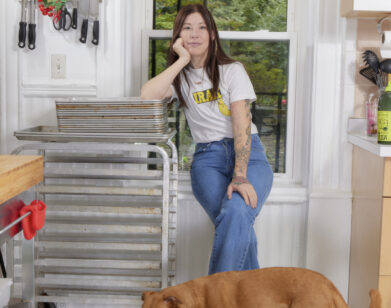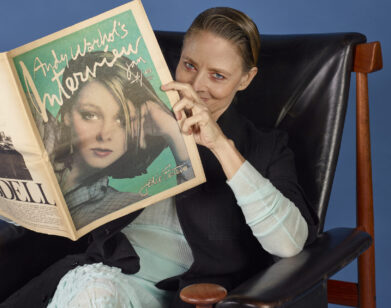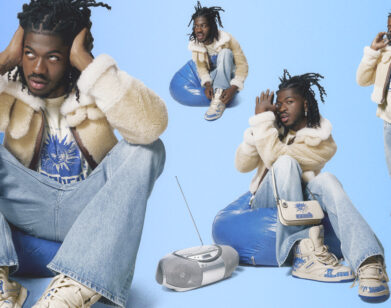ICON
Up All Night With Jocelyne Wildenstein
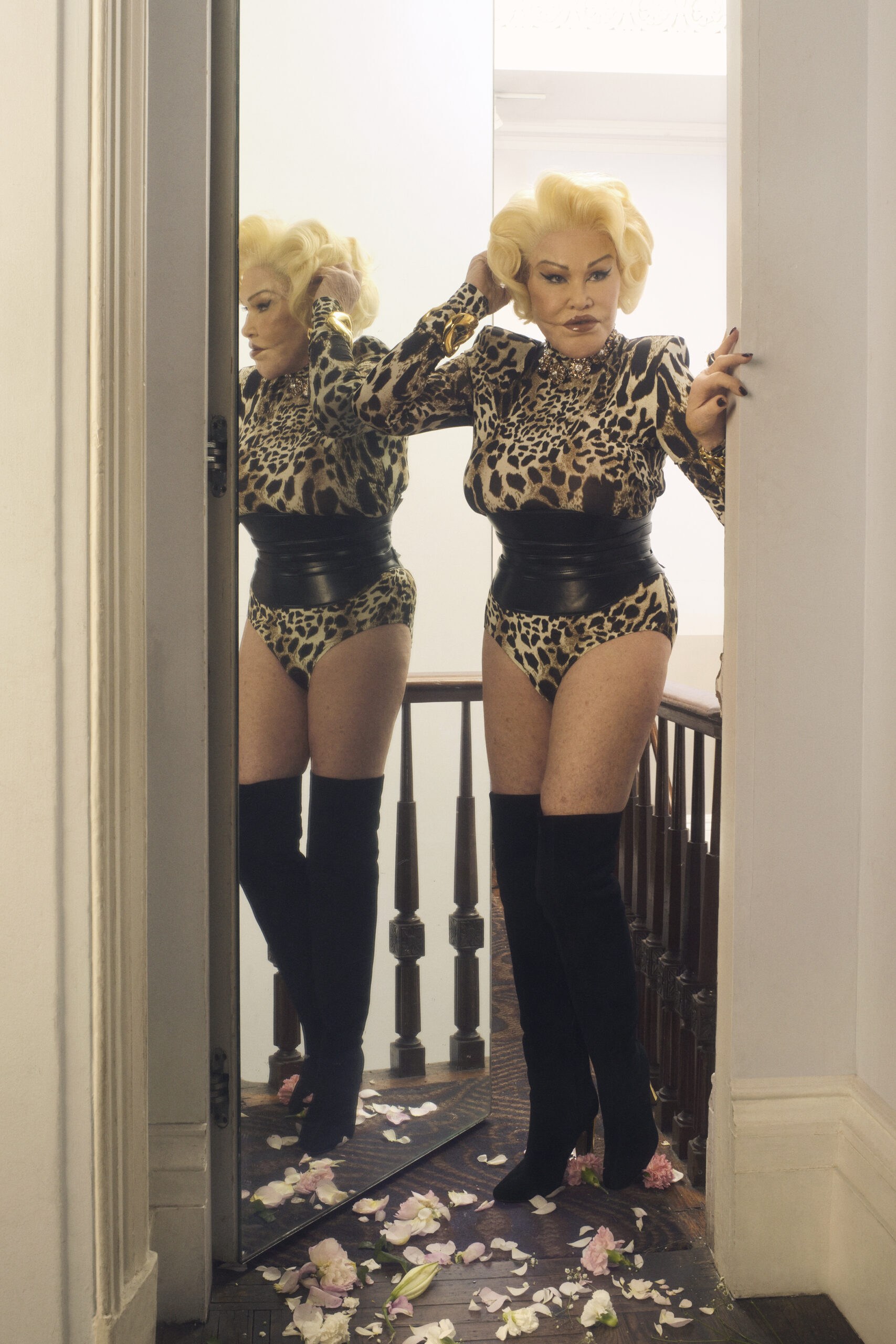
Jocelyne Wildenstein wears Alexandre Vauthier Bodysuit, Alexander McQueen Belt. Balmain Bracelets Paumé Los Angeles Archive. Necklace and Ring Versace. Shoes Alexandre Vauthier.
Few people have captured tabloid attention quite like Jocelyne Wildenstein. Known for her glamorous marriage and subsequent divorce to billionaire art collector Alec Wildenstein, Jocelyne has been one of the jet set’s most outrageous characters for nearly five decades. Her opulent lifestyle first became breaking news in 1998, when the couple’s divorce filing made its way to the media. At the time, Jocelyne estimated that she spent over $700,000 a year on food, wine, flowers, pills, and more—and that was just the beginning. She walked away with one of history’s biggest divorce settlements (an alleged $2.5 billion at least). Since then, she’s been a frequent fixture in the tabloids, which refer to her as “Catwoman,” thanks to her enduring love of cats and her feline features. But despite being regularly splashed across the pages of Page Six, Jocelyne’s remained an enigma. That is, until this winter, when she’ll finally share her story in a two-part HBO documentary. Ahead of its release, she opened up to our editor-in-chief, Mel Ottenberg.
———
WEDNESDAY 2:15 AM OCT. 25, 2023 NYC
MEL OTTENBERG: I just shot with the incredible and iconic Jocelyne Wildenstein—who I’m lucky to be in the presence of right now—for the winter issue of Interview magazine, and we left the shoot and came over to my house for a little after-hours.
JOCELYNE WILDENSTEIN: This is very nice.
OTTENBERG: Jocelyne, are you a night owl?
WILDENSTEIN: I think I am a night owl.
OTTENBERG: Because it’s very late and you seem ready to go right now.
WILDENSTEIN: Are you a night owl?
OTTENBERG: I used to be a real night owl. Am I really a night owl now? No, but I am running on adrenaline because I’m so excited that I get to hang out with you and talk to you. It’s an honor.
WILDENSTEIN: Thank you.
OTTENBERG: You’re one of my favorite icons ever, and I’m so happy to be here with you.
WILDENSTEIN: That’s very nice.
OTTENBERG: You look great. Where are you mostly these days?
WILDENSTEIN: I like to travel. We were just in Miami Beach for a little while, and then we came here to New York, and after New York we will go to Canada and then to Paris.
OTTENBERG: She’s everywhere.
WILDENSTEIN: But it’s smooth, there’s no pressure.
OTTENBERG: We’ve never met, but I remember seeing you once at Beige [a legendary Tuesday night party at the Bowery Bar and Grill]. You were there with David LaChapelle and Amanda Lepore and it was burned into my brain forever because the glamour was turned up so high. And now you’re back in New York and you’re in my apartment! Where are you originally from?
WILDENSTEIN: Lausanne, Switzerland.
OTTENBERG: What kind of upbringing did you have? Were you really into glamour? Were you into fashion?
WILDENSTEIN: As a child?
OTTENBERG: Yes, when you were a girl.
WILDENSTEIN: My childhood was fantastic. We were on the lake, so in the summer I would swim, and in the winter we had the mountain very close where we could go to ski. It was a very nice life, good quality.
OTTENBERG: Switzerland’s beautiful. And so were you just totally a normal kid?
WILDENSTEIN: I don’t know if I was a normal kid, but I did learn to swim and ski very young, at 4 or 5 years old.
OTTENBERG: And then you started having fun and going out and meeting boys and stuff, or meeting men?
WILDENSTEIN: At the time I was more spending time with friends. And when I was in college in Lausanne, everybody would go to the terrace after school, drinking coffee, tea, or juice. Not alcohol.
OTTENBERG: And then you moved to Paris?
WILDENSTEIN: I moved to Paris in ’67.
OTTENBERG: Oh wow. The summer of love. And were you always a night owl? Were you going out to the disco?
WILDENSTEIN: In Paris, yes, we all went to the disco. It was Castel at the time, it was very nice. But also you had St. Philippe which was also great.
OTTENBERG: Yeah, it must’ve been so great in the ’60s.
WILDENSTEIN: Yes, this was good. This was perfect timing.
OTTENBERG: And after that, you discovered a love for Africa. Were you always into animals?
WILDENSTEIN: Yes.
OTTENBERG: How many animals do you have now?
WILDENSTEIN: There are 2,000 animals at Ol Jogi [the Wildenstein family ranch in Kenya] who are under protection. We have everything except lions, because they would kill what we are trying to protect.
OTTENBERG: What’s your favorite animal?
WILDENSTEIN: I love all animals. I mean when you start to have real contact with them, they give a lot back to you. They love you and they recognize you and it’s a good contact. But if you have a leopard, he likes only one person.
OTTENBERG: Do leopards like you?
WILDENSTEIN: Leopards are jealous.
OTTENBERG: Oh wow. When did you first go to Africa?
WILDENSTEIN: It was in ’68, which I remember because when I went back to Paris, there were the student barricades. At that time, Africa was very wild. You could see so many animals around you. It was like a dreamland.
OTTENBERG: And you fell in love.
WILDENSTEIN: I was already in love from when I was a child because my father had a collection of books about Africa in a big chest. One day I opened this chest and I looked at all the pictures of the land and the wildlife, and I said, “I will go there.”
OTTENBERG: And you did it!
WILDENSTEIN: And I did it.
OTTENBERG: And then you stayed.
WILDENSTEIN: Yes. I met my husband [Alec Wildenstein] there.
OTTENBERG: You’ve done a lot in Africa that you don’t get enough credit for, so I’d like to go on the record with some of your achievements because it’s important.
WILDENSTEIN: I created a school for young people, starting around 15 or 16 years old. It’s like an apprenticeship. This is important to give them confidence, work, and a future. We constructed 80 dams for the animals, because the land is half dry and they need water to drink. We have a person who builds wells—
LLOYD KLEIN: She also built a clinic for the animals. She’s known for plastic surgery, but I don’t know that this is what she should be known for because she did a lot of incredible things in her life. Major, major, major achievements.
OTTENBERG: So by the late ’70s, you were getting involved in a lot of ecological and educational philanthropy in Africa, but you were also getting into dealing art. You were wheeling and dealing with the best, right?
WILDENSTEIN: Yes, yes. I married Alec in Las Vegas in ’78, and right away we flew to Texas and started working on one of the biggest private collections in America. For 20 years we built this collection together.
OTTENBERG: Right. You were buying and selling art and living this mega-glamorous life together.
WILDENSTEIN: I mean, at first we had a lot of love together. We loved Africa together, we had a lot of passion, I would say a lot of passion. Passion for art, passion for Africa, passion for traveling.
OTTENBERG: Through your time working with and collecting one of the most incredible art collections in the world, what is your favorite period of art?
WILDENSTEIN: What is my favorite—
OTTENBERG: Period. What is your favorite style or your favorite time and artists?
WILDENSTEIN: Impressionist.
OTTENBERG: So you’re dealing art and you’re really giving glamour. You start selling art and living this mega-glamorous life because you’re so glamorous, Jocelyne.
WILDENSTEIN: Thank you.
OTTENBERG: You’re welcome. What were the ’80s like? What was it like being around in the most opulent era for Jocelyne? Is that when you got really into fashion?
WILDENSTEIN: I have always loved fashion.
OTTENBERG: You look great in fashion. Who are your favorite designers?
WILDENSTEIN: I’ve worn Chanel for a long time; it’s a great house. But there are other designers who are fantastic. You have Lloyd Klein—
OTTENBERG: Lloyd Klein, he’s here with us tonight. My new best friend!
WILDENSTEIN: He’s fantastic, and he has an eye for detail.
OTTENBERG: Where is all of your couture now? Is it in storage? Do you still have it?
WILDENSTEIN: The things I really cherish, the really special ones, I still have them.
OTTENBERG: So you spent decades working within the Wildenstein art dynasty, and then it all got crazy in the ’90s, right?
WILDENSTEIN: Yes.
OTTENBERG: Things got crazy, but it’s also when your story as a feminist icon really starts, because you got into a very nasty divorce battle, and you made sure that you got the settlement that you deserved. You really fought for yourself.
WILDENSTEIN: Yes. We had two children, and I worked all the time for 20 years building the collection. I was not going to the gallery to work in the office or something like that, but I was building the collection.
OTTENBERG: Meaning you were buying and selling the art, you weren’t just in the background.
WILDENSTEIN: Yes.
OTTENBERG: What I think is amazing for those who don’t know the full story is that during the early days of the divorce, your ex-husband tried very hard to prevent you from getting a fair settlement. He really lowballed you and was like, “You’re going to get this,” and you were like, “Hell no. I’m getting what I deserve.” And then you went and got it, right? I mean, it’s so iconic. How did you hold onto the belief that you were going to get what you were entitled to when you were coming up against this incredibly powerful family?
WILDENSTEIN: I love art. I think it can save your life. I simply believed, “I can save my life by having art.”
OTTENBERG: Right. Living with art.
WILDENSTEIN: But also capitalizing on it.
OTTENBERG: It must’ve been really unpleasant to have this battle play out so publicly. The press was very hard on you.
WILDENSTEIN: Yes, but I could handle it when they dealt me a loss. I knew I needed all the press I could get.
OTTENBERG: Tell me about that.
WILDENSTEIN: It’s like they rain on you.
OTTENBERG: So you thought it was sort of fun that everyone in America was obsessed with the drama, they were obsessed with your face, they were obsessed with how you spent your money, they were obsessed with Jocelyne. You found humor in that.
WILDENSTEIN: Yes.
OTTENBERG: I love that for you.
WILDENSTEIN: Even the judge told me not to go to Beige so much.
OTTENBERG: Really? The judge said, “Jocelyne, don’t go to Beige so much”? Oh my god. That’s incredible.
WILDENSTEIN: Yes.
OTTENBERG: So when did you start doing things with your face? When did you start becoming your own greatest piece of art?
WILDENSTEIN: I have changed a lot. My hair went from very curly to very straight, but I always had stylish, wild hair. I have all the pictures of myself, all the albums from my parents, from when I was in the carriage up to now.
OTTENBERG: Yes.
WILDENSTEIN: And when you look at the pictures of me, some with curly hair, some with exotic hair, some with straight hair, you can see how it completely changes your appearance. Also the way I dress changes how I am seen.
OTTENBERG: You’re so beautiful and you have such beautiful eyes. There’s a lot of twinkle in your eyes.
WILDENSTEIN: They are blue, they’re a bit of green, they have a bit of gold. If I go to the seaside, they become a different kind of blue.
OTTENBERG: Yes. Different eyes, different hair, different appearance—
WILDENSTEIN: But hair, especially, is always a lot of fantasy.
OTTENBERG: Yes. You’ve always had good hair.
WILDENSTEIN: Always.
OTTENBERG: But you also have been bold with how you want to change your face, right? I mean, it’s like you do it all.
WILDENSTEIN: Not really. Journalists can say whatever they like, they can say whatever they feel. I never bother to make a contradiction, because it’s really not my problem.
OTTENBERG: Well, you look really great. Alright, so then you win this divorce, and you win big, you win billions of dollars. What happens then? Are we having fun? I feel like you have a fun life.
WILDENSTEIN: I think I had a lot of fun. I found freedom, and instead of having to behave according to a program, I could suddenly have the freedom to appreciate it.
OTTENBERG: Yes. You have had so many glamorous moments in your life, what was the most glamorous moment?
WILDENSTEIN: Oh, there are so many glamorous moments.
OTTENBERG: Give me one.
WILDENSTEIN: Well right now, I have my commercial license to fly.
OTTENBERG: Wow, you fly?
WILDENSTEIN: Oh yes. Up to a G5.
OTTENBERG: You’re not scared?
WILDENSTEIN: No. It’s better to fly than to be scared.
OTTENBERG: I like it.
WILDENSTEIN: It’s a little plane, it’s very exciting.
OTTENBERG: So the height of glamour for you is the freedom you feel flying?
WILDENSTEIN: Yes, you can go in the morning, fly low, see the animals go into the river.
OTTENBERG: And there’s other big stuff happening in your life. You’re doing a documentary.
WILDENSTEIN: Yeah.
OTTENBERG: It’s going to be really major, Lloyd tells me. I believe him. What was that process like? Opening up to the camera like that? Is it easy, challenging?
WILDENSTEIN: I forget the camera. It’s like the conversation we’re having. It’s like we are in a little bistro.
OTTENBERG: And you’re telling your story, like you are really coming out and talking. I feel like a lot of people have never even heard you talk because you’re very elusive, right? But you have a lot to say about your life.
WILDENSTEIN: I do.
OTTENBERG: We were talking earlier with my friend Alissa, who’s a huge Jocelyne Wildenstein fan, and she was telling me that she thinks you’re a real feminist icon for what you did for yourself in your life. Do you feel that way? You’re definitely a gay icon. We know that. We don’t even need to discuss that you’re an American icon.
WILDENSTEIN: No, it’s global.
OTTENBERG: Right. You’re a global icon. Thank you for sitting down and talking to me. I’m so honored to interview you for Interview magazine.
WILDENSTEIN: Thank you.
OTTENBERG: You’re so awesome. You’re so cool.
WILDENSTEIN: Thank you.
OTTENBERG: Thank you.
WILDENSTEIN: Oh, great.
OTTENBERG: So fun.
WILDENSTEIN: Lots of fun. Can I use your bathroom?
OTTENBERG: Of course you can use my bathroom.
———
Hair: Sonny Molina using Davines at Streeters.
Makeup: Maud Laceppe using Mac Cosmetics at The Wall Group.
Nails: Naomi Yasuda using Manicurist at Forward Artists.
Set Design: Mike Feswick.
Digital Technician: Jarrod Turner.
Tailor: Lucy Payne.
Production: The Morrison Group.
Post-production: MCD Creative.
Photography Assistants: Ben Kasun and Alex Johnstone.
Fashion Assistant: Ela Erdoǧan.
Hair Assistant: Jonahi O. Rose.
Makeup Assistant: Kyle Howell.
Production Assistant: Autumn Boxley.
Location: Secret.

